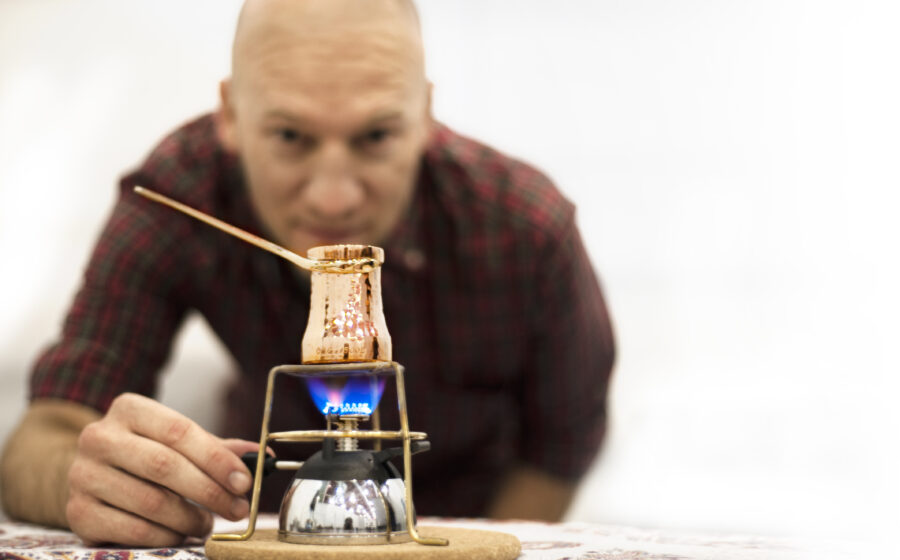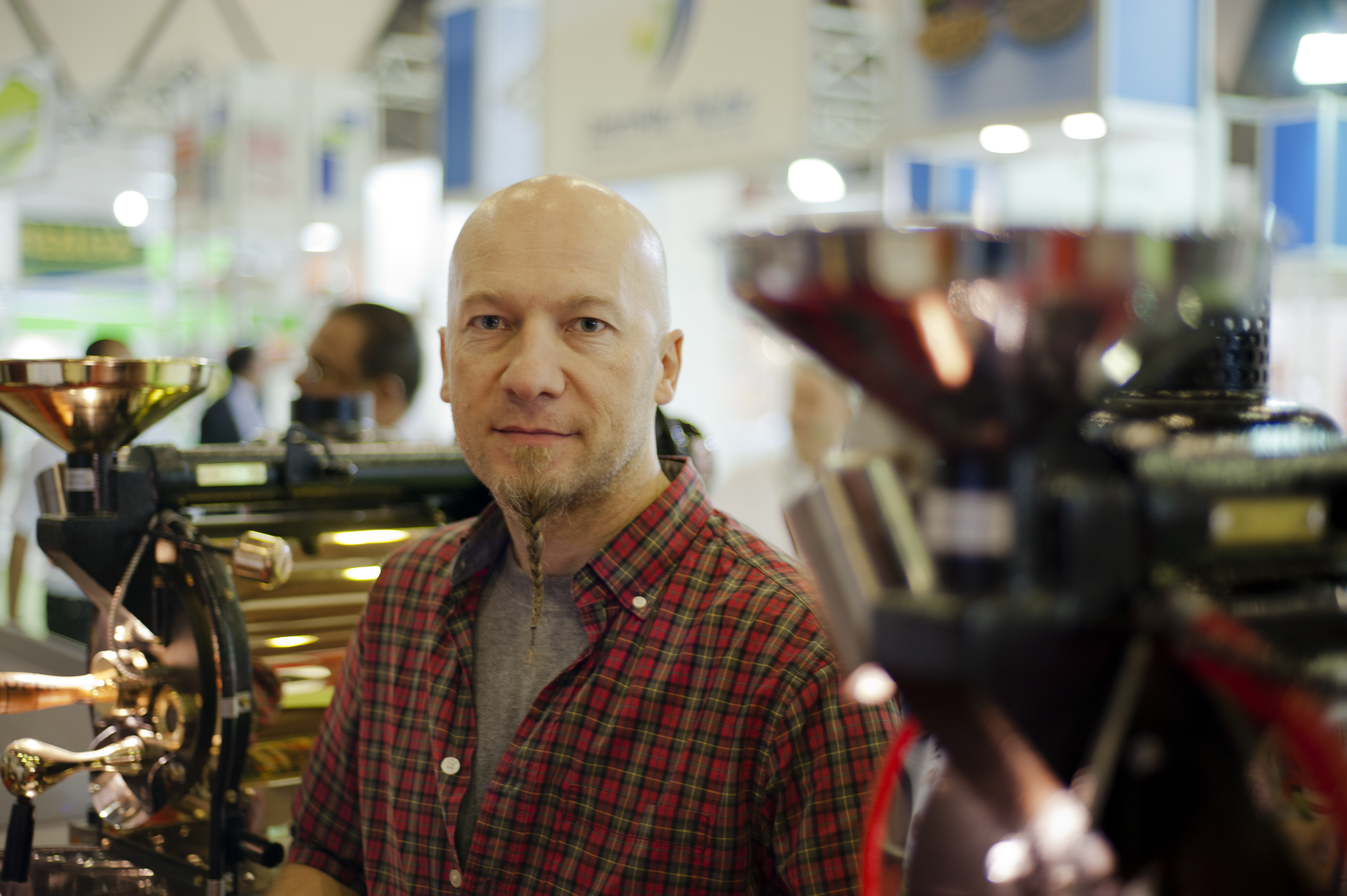[A]lthough specialty coffee has revived a variety of classic brew methods, from the vacuum pot to the Chemex, Turkish coffee has been largely overlooked. In fact, some coffee experts have gone so far as to say that it is impossible to brew a proper cup of Turkish coffee. As the former World Cezve/Ibrik Champion, Turgay Yıldızlı is on a mission to prove them wrong.
Raised in Istanbul, Yıldızlı now lives in New Orleans with his wife Amy. He’s the founder of Specialty Turkish Coffee, a website which offers everything one needs to make Turkish coffee, from equipment to tutorials. He also works as a consultant, most recently helping Istanbul roaster Kronotrop develop their Turkish coffee program. Yıldızlı sees his greatest task as tearing down stereotypes, even while striving to meet expectations.
“Currently, Turkish coffee drinkers, because of habit, expect a full heavy body and and dense texture from their coffee,” says Yıldızlı. “As the quality of Turkish coffee begins to improve, my goal is to keep these expectations in mind while at the same time enriching the consumer experience by offering a flavorful full-bodied cup of coffee balanced with clean acidity.”
Although specialty coffee has revived a variety of classic brew methods, from the vacuum pot to the Chemex, Turkish coffee has been largely overlooked.
Turkish coffee is one of the oldest ways of making coffee in the world. Finely ground coffee is steeped in a small metal pot called a cezve or ibrik. The cezve is placed over a heat source, causing the temperature to rise over the course of brewing. This factor separates Turkish coffee from virtually any other brew method, which use either a steady temperature, like espresso, or a slowly decreasing temperature, like a French press or pour-over. The rising temperature also means that only light to medium roasts should be used for Turkish coffee. Because of the increased solubility, “a darker roast can easily lead to over extraction and overwhelming bitterness,” says Yıldızlı. The other component that separates Turkish coffee from other brew methods is the fact that the coffee grounds are not filtered from the final product. Like a cupping bowl, the particles are allowed to sink to the bottom of the cup. This makes Turkish coffee something like a cross between an espresso and a French press.
Yıldızlı has several innovations that he believes improve the quality of his brews. For one, Yıldızlı uses a slightly coarser grind when making Turkish coffee. Although it’s still finer than espresso, it doesn’t over-extract as quickly as the dust-like grind usually used in Turkish coffee. He also, rather iconoclastically, decants the slurry into a chilled Turkish coffee cup. Not only does this bring the beverage to drinking temperature sooner, but it cuts down on post-pour extraction. These innovations came when Yıldızlı began measuring the total dissolved solids of his brews.
Although making a proper cup of Turkish coffee takes skill and finesse, Yıldızlı has dedicated a lot of effort toward making user-friendly tutorials. With a simple copper cezve and a hand mill—Yıldızlı prefers Sozen grinders—you can make Turkish coffee at home if you follow these simple steps:
Brewing Turkish Coffee
1. Grind eight grams of lightly roasted specialty coffee at a consistency between very fine Turkish coffee and espresso grind size.
2. Add ground coffee to the cezve and slowly pour 65 grams (2.3 ounces) of 140 degree water in to the pot over the coffee grounds. (This temperature water is preferable, however room temperature water can be used to good results as long as brew time is held at two to two and a half minutes.)
3. Stir the coffee-water mixture well with a teaspoon. Agitation prevents clumps in the slurry and promotes even extraction.
4. Place the coffee pot over the heat source. Adjust heat source to obtain optimal brew time of around two to two and a half minutes. Do not agitate during brewing.
5. Watch carefully. When the foam begins to rise towards the rim but before the coffee boils, remove it from the heat.
6. Hold a pre-chilled Turkish coffee cup at an angle to help retain the foam. Pour slowly in to the cup.
7. Serve with a glass of water and a Turkish delight. Allow the coffee to settle one to two minutes before enjoying. Be careful not to drink the settled grounds!
—Michael Butterworth is a barista trainer at Quills Coffee and founding editor of The Coffee Compass. Photos by Mustafa Dedeoğlu.

















